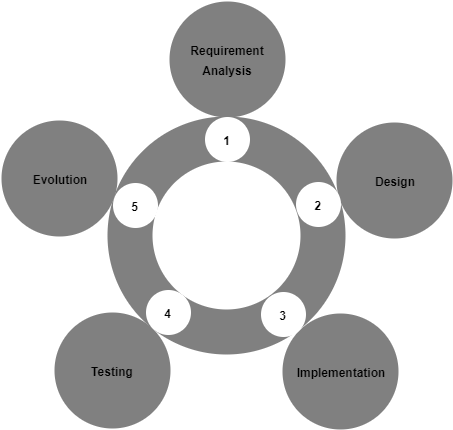Software Development Life Cycle
For those of you who are not familiar with the term: Software Development Life Cycle, let us try to understand it.
The Software Development Life Cycle, also sometimes referred to as SDLC for short, is the process of planning, developing, testing, and deploying software.
Teams follow a sequence of phases, and each phase uses the outcome of its previous phase, as shown in the following diagram:

Software Development Life Cycle
Let's take a look at the SDLC phases in detail.
Requirement analysis
This is the first stage of the cycle. Here, the business team (mostly comprised of business analysts) perform a requirement analysis of their project's business needs. The requirements can be internal to the organization, or external, from a customer. This study involves finding the nature and scope of the requirements. With the gathered information, there is a proposal to either improve the system or create a new one. The project cost gets decided, and benefits are laid out. Then the project goals are defined.
Design
The second phase is the design phase. Here, the system architects and the system designers formulate the desired features of the software solution and create a project plan. This plan may include process diagrams, overall interface, and layout design, along with a vast set of documentation.
Implementation
The third phase is the implementation phase. Here, the project manager creates and assigns work to the developers. The developers develop the code depending on the tasks and goals defined in the design phase. This phase may last from a few months to a year, depending on the project.
Testing
The fourth phase is the testing phase. When all the decided features are developed, the testing team takes over. For the next few months, all features are thoroughly tested. Every module of the software is collected and tested. Defects are raised if any bugs or errors occur while testing. In the event of a failure, the development team quickly acts to resolve the failures. The thoroughly tested code is then deployed into the production environment.
Evolution
The last phase is the evolution phase or the maintenance phase. Feedback from the users/customers is analyzed, and the whole cycle of developing, testing, and releasing the new features and fixes in the form of patches or upgrades repeats.





































































